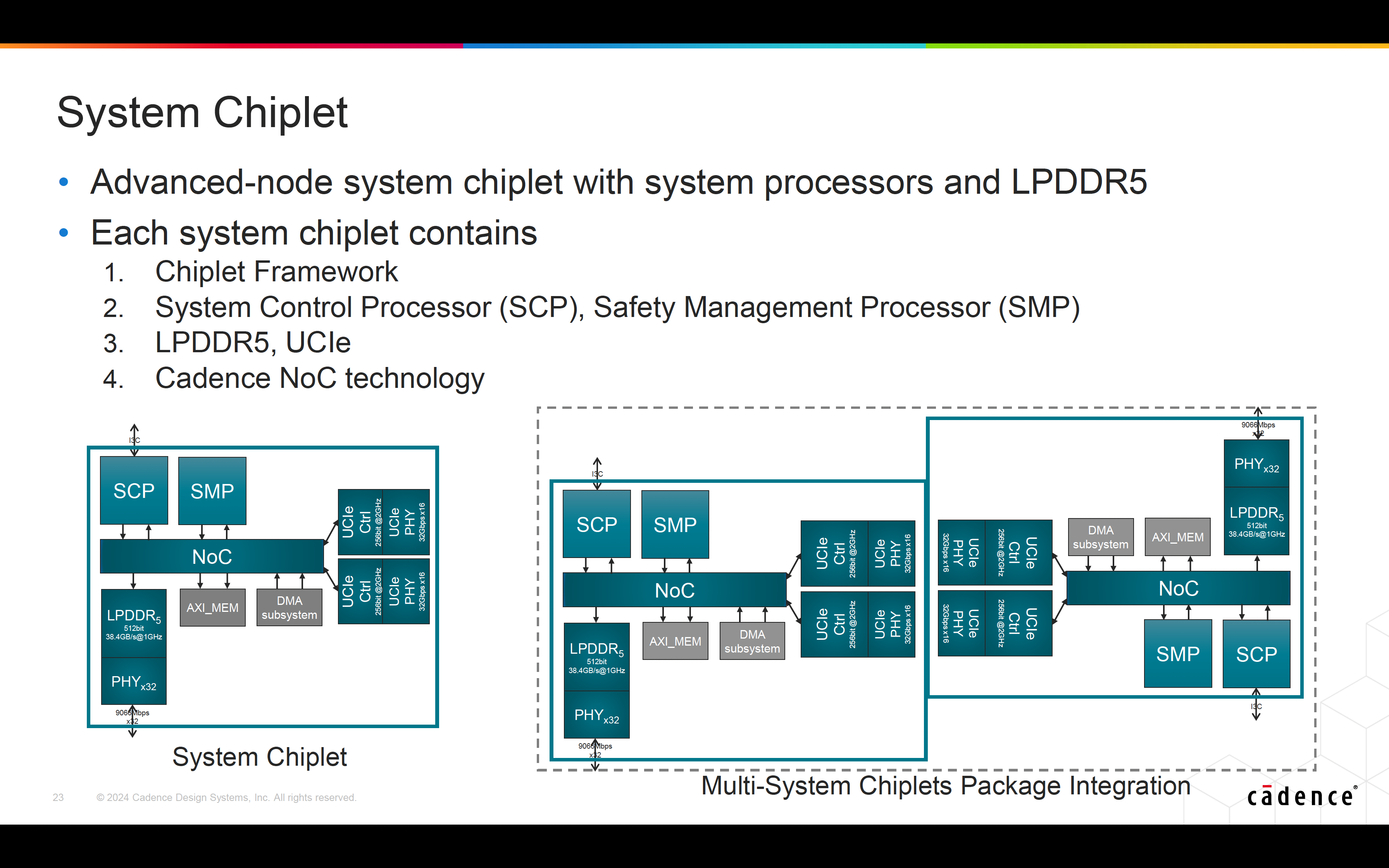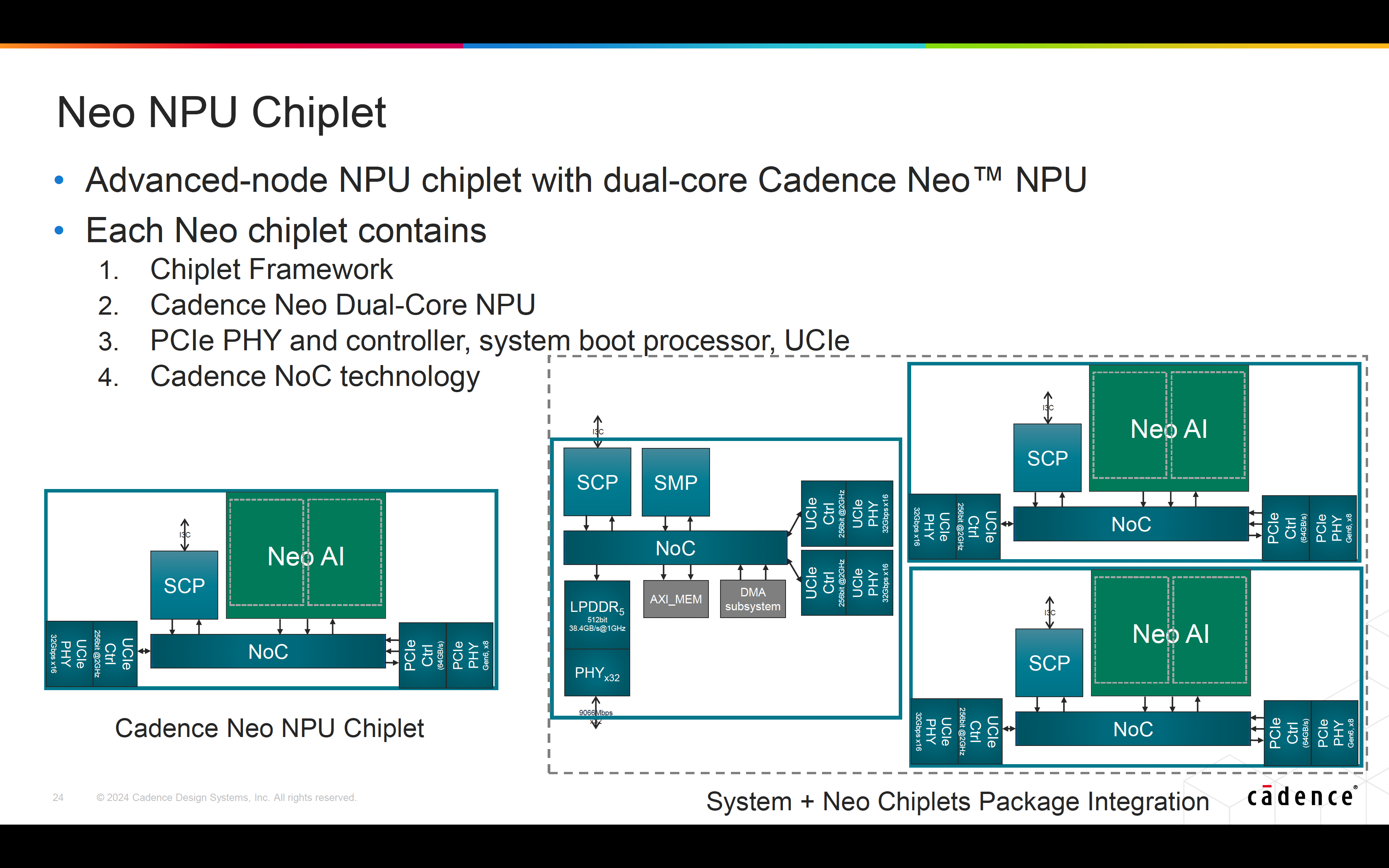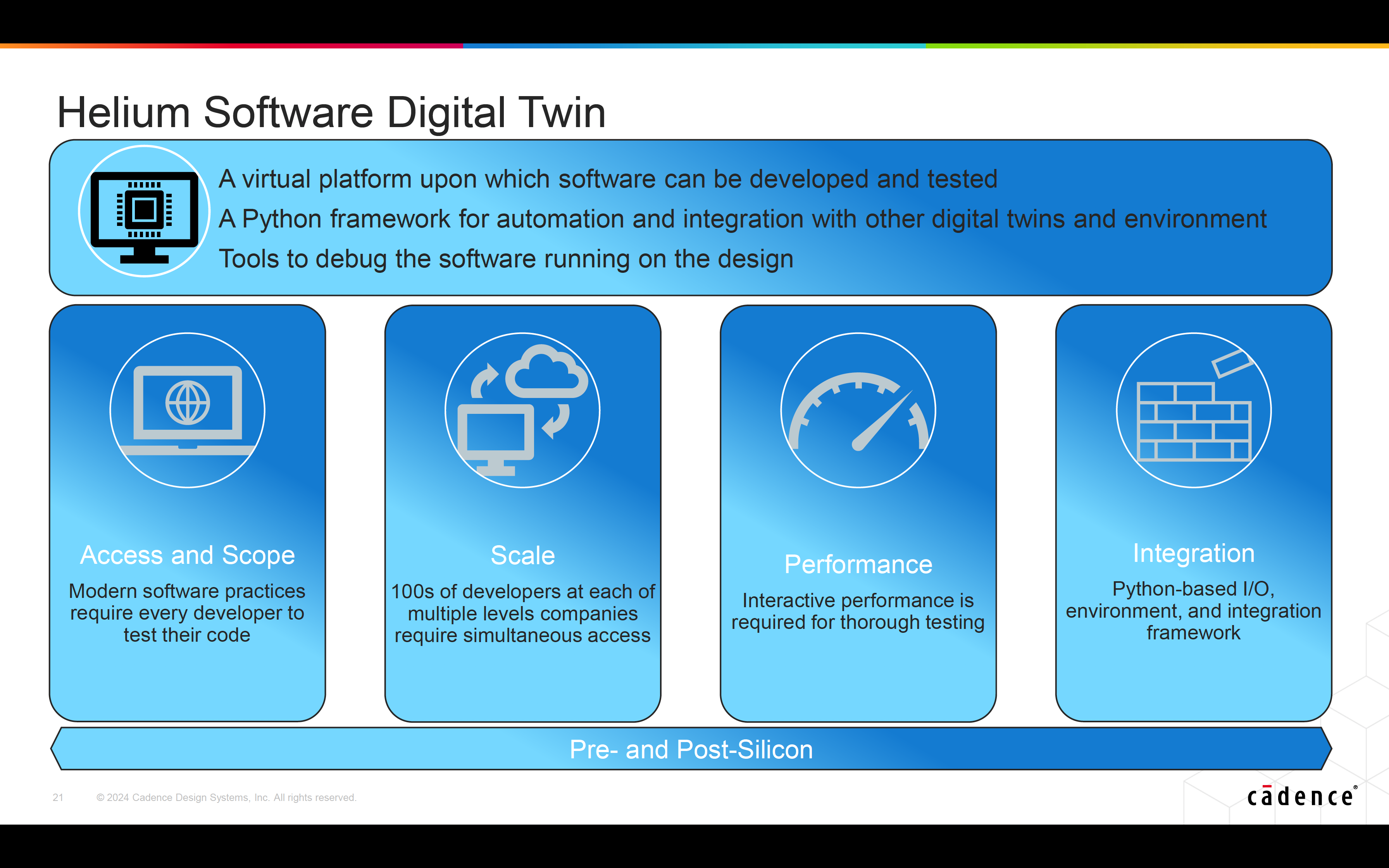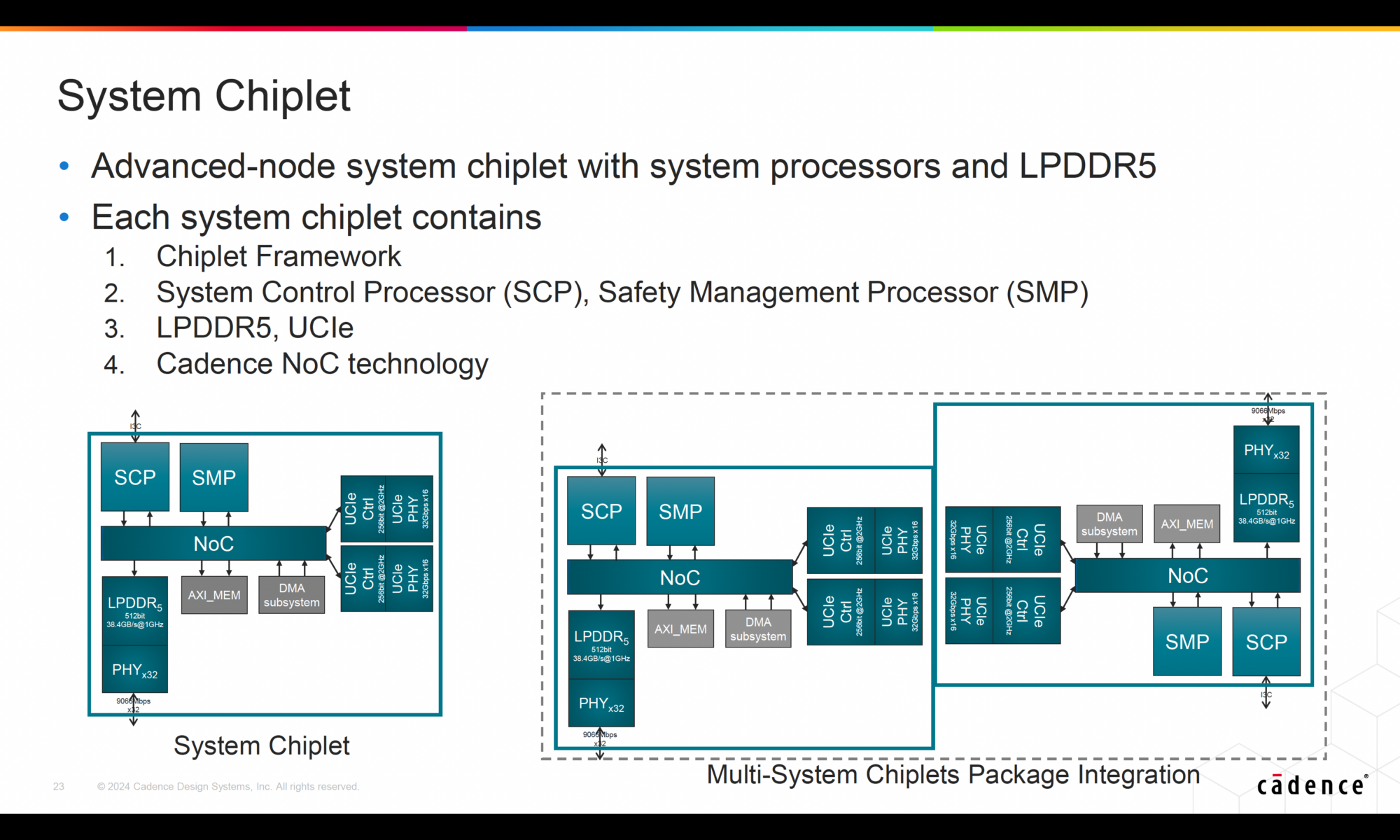Key Takeaways
- The automotive industry is rapidly evolving towards intelligent, connected, and autonomous vehicles with System-on-Chip (SoC) technology.
- Chiplet-based architectures are becoming essential in automotive SoC design, allowing for modular, scalable, and customizable solutions.
- Cadence offers tools such as the SoC Design Cockpit and Helium software that enhance the design process and ensure safety, performance, and reliability of automotive systems.
The automotive industry is evolving rapidly with the increasing demand for intelligent, connected, and autonomous vehicles. Central to this transformation are System-on-Chip (SoC) designs, which integrate multiple processing units into a single chip for managing everything from safety systems to in-car entertainment. However, as these systems become more complex, traditional SoC designs face challenges around performance, power, and scalability. Chiplet-based architectures are now driving innovation by offering more flexible, efficient, and customizable solutions for automotive SoCs.
Cadence recently hosted a webinar on this topic, with Moshiko Emmer, a Distinguished Engineer for the company’s Silicon Solutions Group (SSG) presenting.
Benefits of Leveraging Chiplets in Automotive SoC Design
Chiplet-based designs are reshaping automotive SoC development by offering a modular and scalable approach. Each chiplet, such as CPU cores, memory units, or specialized processing units like NPUs, is a self-contained module that can be easily integrated into larger systems. As automotive systems advance, especially with ADAS, infotainment, and autonomous driving, chiplet architectures provide several key advantages.
-Enable engineers to focus on specific value-added functions, reducing development time, cost, and risk while improving time-to-market.
-Allow for highly scalable designs, meeting the varying performance and power needs of different vehicle segments.
-Ensure long-term cost efficiency and adaptability to new technologies through reuse of chiplets across multiple generations of SoCs
By combining off-the-shelf chiplets with specialized automotive IP, manufacturers can build comprehensive solutions, benefiting from a broad ecosystem of reference designs and industry-standard IP.
Accelerating Automotive SoC Design
Adopting chiplet-based designs for automotive SoCs involves several essential efforts to ensure performance, safety, and reliability.
Chiplet Frameworks
A robust chiplet framework ensures the seamless integration of chiplets from different vendors. Standardized protocols and interfaces, such as UCle™, streamline the integration process, allowing for more efficient chiplet-based SoC designs. Cadence’s System Chiplet framework enables designers to integrate and connect multiple chiplets in a cohesive architecture, facilitating high-performance, scalable designs tailored for automotive applications.
SoC Design Cockpit
The SoC Design Cockpit approach helps automate the design process with correct-by-construction tools, ensuring that the final system meets all performance and safety requirements. This platform enables extensibility for customizing automotive-specific features like real-time processing and high-speed data handling. For example, the Cadence System Chiplet comes with pre-designed frameworks for automotive applications, allowing engineers to quickly select the necessary chiplets and integrate them efficiently into a full SoC. The cockpit’s automated tools help reduce manual intervention, ensuring high-quality and safe designs for automotive use.


Virtual Platforms
Virtual platforms enable early software development before hardware is available, which is especially valuable for complex systems like ADAS and infotainment. Tools like Cadence Helium™ software digital-twin allow engineers to simulate hardware, test software, and avoid costly errors before physical hardware is built. By integrating Cadence’s Neo NPU chiplet, which is designed for AI and machine learning tasks, into a virtual platform, developers can simulate the performance of advanced automotive applications such as real-time object detection, predictive analytics, and autonomous driving algorithms.

Design Services and Ecosystem Collaboration
Collaborating with design services partners and leveraging off-the-shelf chiplets accelerates the integration of complex systems such as sensor fusion and machine learning. Working within a broad ecosystem of partners can also speed up the development of automotive SoCs. Cadence’s Neo NPU chiplet enables integration with machine learning workflows, supporting the development of intelligent, real-time systems for automotive applications. Together with the System Chiplet framework, these chiplets facilitate rapid prototyping and customization, accelerating time-to-market.
Chiplet Testchips: Ensuring Automotive SoC Reliability
Given the critical nature of automotive applications, ensuring the reliability and safety of chiplet-based SoCs is paramount. Chiplet testchips validate the performance and functionality of individual chiplets before integration into the full SoC. Testchips are essential for verifying that chiplets meet the functional requirements of automotive systems like ADAS and infotainment, as well as for ensuring compliance with safety standards such as ISO 26262.
Summary
Chiplet-based architectures are transforming automotive SoC design by offering scalable, customizable, and cost-efficient solutions. By leveraging Cadence’s System Chiplet and Neo NPU chiplet frameworks, as well as tools like the SoC Design Cockpit and Cadence Helium™ software digital-twin, automotive manufacturers can accelerate the development of next-generation vehicle technologies like ADAS, autonomous driving, and infotainment. Chiplet testchips further ensure the reliability and safety of these designs. As chiplet technology continues to evolve, it will unlock new opportunities for the automotive sector, driving smarter, safer, and more connected vehicles.
For more details, refer to the following:
Cadence Automotive Solutions page.
You can access this webinar on-demand from here.
Also Read:
Accelerating Simulation. Innovation in Verification
Accelerating Electric Vehicle Development – Through Integrated Design Flow for Power Modules
Compiler Tuning for Simulator Speedup. Innovation in Verification
Share this post via:





Comments
There are no comments yet.
You must register or log in to view/post comments.